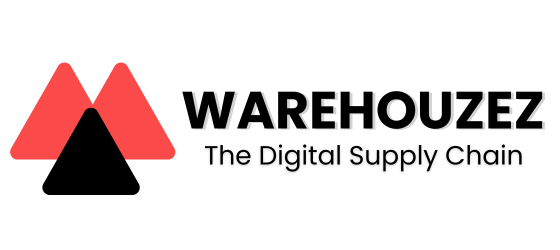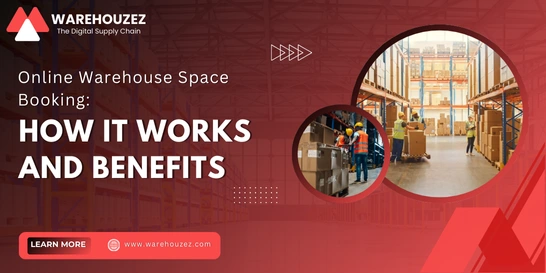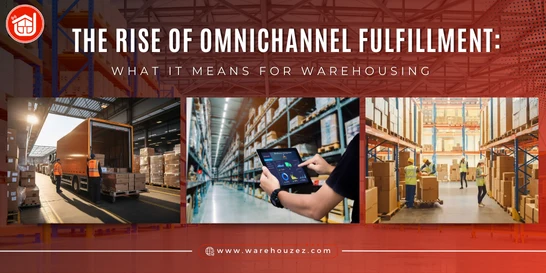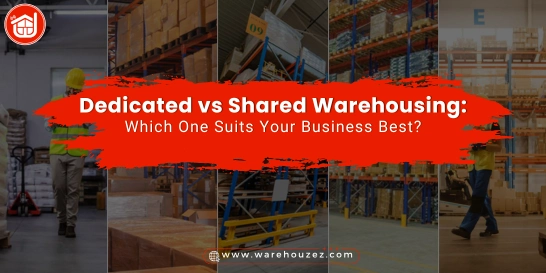Top Strategies and Technologies for Optimizing Last-Mile Delivery
Top Strategies and Technologies for Optimizing Last-Mile Delivery
Last-mile delivery is the final leg of the supply chain that involves getting packages from a distribution center to the doorstep. It has certainly become a crucial focus for businesses as online shopping continues to surge in popularity. With consumers demanding faster, more efficient delivery options, companies are turning to innovative strategies and technologies to improve last-mile delivery operations.
In this particular blog post, we will explore some of the top strategies and technologies that businesses can utilize to optimize their last-mile delivery operations and enhance customer satisfaction. From route optimization and real-time tracking to the use of drones and autonomous vehicles, there are several solutions transforming the last-mile delivery process. So, let's get started!
Defining Last-Mile Delivery
In simple terms, last-mile delivery refers to the final leg of the product delivery process, where goods are transported from a warehouse to the end customer's doorstep. It plays a crucial role in overall customer satisfaction and business success. It ensures timely deliveries, assists in meeting customer expectations, and can even serve as a competitive differentiator for businesses. However, this final stage of product delivery comes with numerous challenges, such as traffic congestion, delivery distance, and the need for real-time visibility. To combat these challenges, companies utilize various best practices, such as route optimization, leveraging technology and data analytics, partnering with third-party logistics providers (3PLs), and exploring alternative delivery options like drones or lockers. These practices help enhance efficiency, reduce costs, and ensure a seamless transportation process.
Major Challenges in Last-Mile Delivery
This final stage of supply chain management is seen as quite challenging for businesses, with issues such as high costs, traffic congestion, rising customer demands, and parcel security.
Let's take a quick look at the major last-mile delivery challenges:
1. Traffic Congestions in Urban Areas
One of the major challenges in last-mile delivery is the increasing traffic congestion in urban areas. With the growing number of vehicles on the road, delivery vans often get stuck in traffic jams, leading to delays in deliveries. This not only affects the delivery time but also increases fuel consumption and operational costs for delivery companies.
2. Rising Customer Expectations and Demand for Quick Deliveries
In today's fast-paced world, customers have become accustomed to instant gratification and expect quick deliveries of their orders. This puts immense pressure on logistics companies to fulfil these expectations and meet tight timelines. Meeting such high customer demands can be challenging, especially during peak seasons when the volume of orders increases significantly.
3. High Delivery Costs and Inefficiencies
This final stage is known to be one of the most expensive parts of the supply chain. The cost of transportation, labor, and maintaining infrastructure can be quite high. Additionally, inefficient route planning and multiple failed delivery attempts can further increase costs. Logistics companies need to find ways to optimize their operations and reduce costs without compromising on the quality of service.
4. Parcel Security
Another challenge is ensuring the security of the parcels. With the increase in package thefts and frauds, ensuring the integrity and safety of the packages from the moment they leave the warehouse until they reach the customer's doorstep is crucial. This requires advanced tracking systems, secure packaging, and efficient delivery processes that minimize the risk of theft or damage.
Luckily, we can now solve last mile problems by implementing some strategies and technologies. So, let's learn more about them.
Top Strategies and Technologies to Improve Last-Mile Delivery
1. Route Planning and Optimization
One of the top strategies to improve last-mile delivery is to focus on route planning and optimization. By using advanced algorithms and data analysis, companies can create optimal delivery routes that minimize travel time and distance. This not only improves delivery efficiency but also reduces costs and boosts customer satisfaction.
2. Partnering with Third-Party Logistics Providers
Another effective strategy is to partner with third-party logistics providers (3PLs) who have extensive experience in ensuring timely deliveries. These providers have expertise in managing and optimizing distribution networks, and they can help companies improve their supply chain performance. By outsourcing this aspect to 3PLs, companies can focus on their core operations while benefiting from the experience and resources of the logistics providers.
3. Improving Reverse Logistics
Reverse logistics refers to the process of managing product returns and exchanges. A key strategy to improve last-mile delivery is to streamline and optimize reverse logistics operations. Efficient handling of product returns and exchanges can reduce costs and improve customer satisfaction. Companies can invest in technologies and systems that enable quick and easy return pickups and exchanges, as well as automated processing and inventory management for returned products.
4. Utilizing Real-time Tracking Technologies
Implementing real-time tracking technologies such as GPS and IoT (Internet of Things) devices can significantly optimize the delivery process. These technologies provide real-time visibility and location information on the delivery status, enabling companies to monitor and manage their deliveries more efficiently. Real-time tracking also allows for proactive communication with customers regarding estimated delivery times and any potential delays.
5. Implementing Warehouse Management Software (WMS) and Transportation Management Systems (TMS)
Utilizing WMS and TMS software can help optimize the entire logistics process. These systems provide more efficient routing and scheduling, allowing companies to maximize their resources and reduce the time and cost associated with last-mile deliveries. Additionally, these software solutions can include features such as order tracking, inventory management, and route optimization, further enhancing the overall transportation process.
6. Usage of Drones and Autonomous Vehicles for Faster Deliveries
The use of drones and autonomous vehicles can significantly improve last-mile delivery times. Drones are especially useful for deliveries to remote or hard-to-reach areas, as they can bypass traditional road systems. Autonomous vehicles can navigate through traffic more efficiently and can operate 24/7, ensuring faster and more reliable deliveries.
7. Prioritizing Sustainable Solutions
Implementing sustainable strategies in logistics can have numerous benefits. Companies can reduce their carbon footprint by optimizing delivery routes, using electric vehicles, or even implementing bicycle couriers for shorter distances. This not only helps the environment but also improves the overall reputation and image of the company.
Benefits of Optimizing Last-Mile Delivery
The benefits of optimizing last-mile delivery are numerous, including:
Improve customer satisfaction by providing faster, more accurate deliveries.
Increase operational efficiency by minimizing delivery time and reducing fuel expenses.
Reduce transportation costs by optimizing routes and minimizing distance travelled.
Enhance inventory management by identifying real-time stock levels and reducing holding costs.
Improve visibility and transparency by providing real-time tracking and delivery updates to customers.
Enhance driver productivity by providing them with efficient routing and scheduling tools.
Strengthen customer loyalty and retention by meeting and exceeding their expectations.
Minimize the risk of theft and fraud by implementing secure transportation processes and tracking systems.
Adapt to changing market demands and customer expectations by offering flexible and convenient delivery options.
Gain a competitive advantage by differentiating your business through reliable and timely deliveries.
Bottom Line
In all likelihood, optimizing last-mile delivery is crucial for businesses to stay competitive in today's fast-paced e-commerce landscape. By implementing the strategies and technologies mentioned, businesses can improve efficiency, reduce costs, and enhance customer satisfaction. The use of route optimization software, delivery drones, smart lockers, and crowdsourcing can all contribute to achieving these goals. However, it is important for businesses to continually adapt and evolve their last-mile delivery strategies to keep up with changing consumer expectations and technological advancements. By doing so, businesses can ensure a seamless and efficient last-mile delivery experience for their customers, ultimately leading to long-term success.



